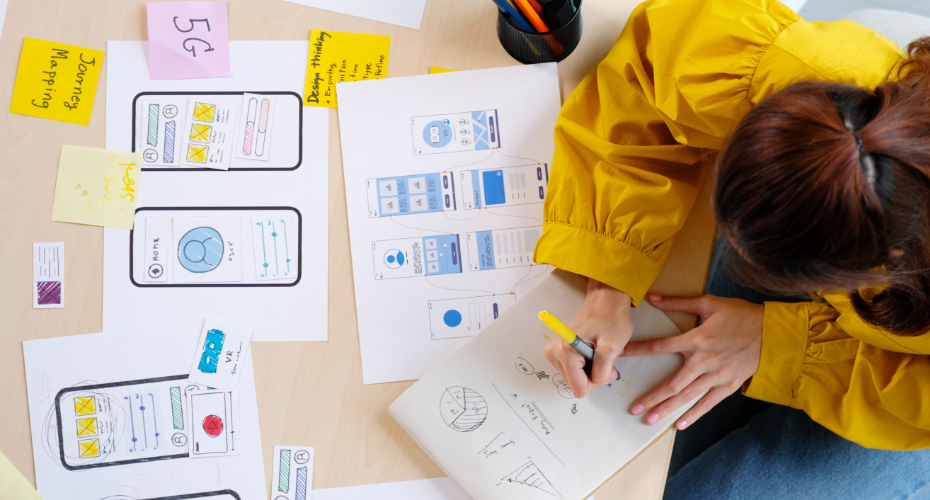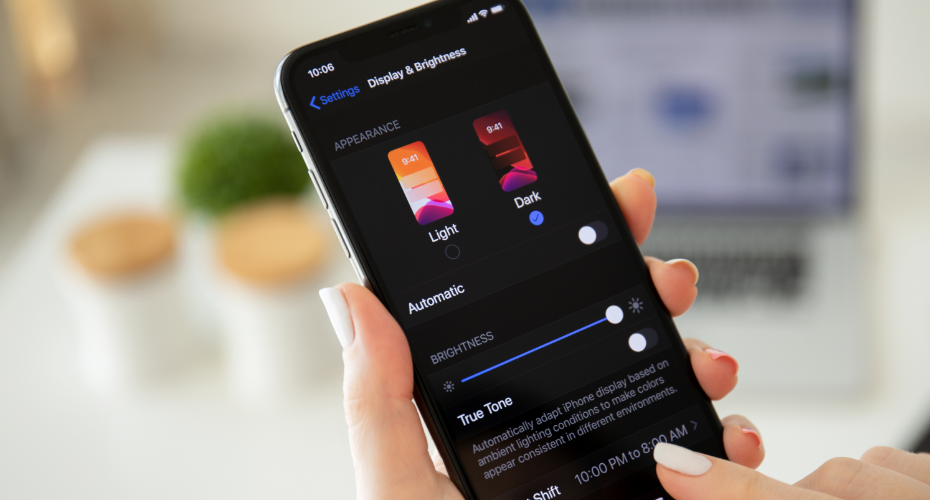
UX/UI: Expect Major Changes in 2022 and Beyond

After a year in which the return to pre-pandemic normality was often tantalizingly within reach, digital adoption continued to accelerate in ways we never could have predicted two years ago. There is no hyperbole in saying that increased adoption and awareness has transformed everything from the way people work to what consumers expect from their digital experience on mobile and web.
With that in mind, three major design changes are coming to User Interface (UI) and User Experience (UX), and there is a consensus within the design community that these trends will begin to emerge more prominently in 2022.
The caveat is that whenever you start to think what’s next in UI and UX design trends, there is a tendency for companies to want to tie these ideas to a timeline. And while the tech industry has a well-earned reputation for wanting to tell you that the future is now, it is often more likely that the changes that we need to consider will be more gradual than in your face from January 1.
So, what are the trends that we need to be aware of and, importantly, how will they impact business optimization strategies and digital solutions over the next 12 months (at least). In addition, how can we integrate what is coming down the road with the next-generation technology that we are already using to enhance both digital maturity and customer engagement.
And for anyone that is still unsure as to what the future will look like, it is a safe bet that AI and data-driven solutions will play a significant role.
- AI-Powered Design will be Important
With around 24 million developers in the world and many more who class themselves as digital engineers or architects, it is highly likely that we have all met someone with knowledge of computer-aided design (CAD). You might play Minecraft (or at least watched someone build entire structures), or you could even have been a fan of Kid CAD back in the day.
In today’s tech-savvy and connected society, CAD has taken significant strides to becoming highly sophisticated and available to anybody with a creative attitude – popular software like Adobe Photoshop and InDesign are prime examples of design-centric tools that do not have the steep learning curves of, say, a decade ago. In fact, one of the reasons why the process of digital design is becoming more accessible is artificial intelligence.
This type of technology frees up UI and UX designers to spend less time doing iterative design work – pixel by pixel, basically – to create specific design elements and focus more on the big picture thinking that produces better products and experiences.
For example, I was recently working on a project that required me to create images of people in different locations. By hand, the process of trimming one image, superimposing it over another, and making changes to the margins, lighting, and angles to make it look realistic would take hours. That is fine if you have the time to spare, but the fast pace of the modern business world does not always allow us that luxury.
However, AI-powered design software can take this mundane process 90 percent of the way. In other word, a time-consuming project can be taken over the finish line by a designer who knows what standard they’re working toward.
As you might guess, I firmly believe that people shouldn’t spend their time cleaning up pixels. In fact, we often need to leverage human intelligence to design products for real people. The technology available today makes that possible, which is one reason why AI-powered design tools will help unlock more human capital in 2022.
- Engagement with the Metaverse
Facebook’s decision to rebrand the company as Meta might have come as a surprise to the general public, but there is no doubt that Zuckerberg wanted to bring the concept of the metaverse into the evolution of his social network.
However, this attempt to claim a vision of our virtual future as next-gen social technology has been the subject of conversations in the tech sector for a long time. Thanks to the ongoing impact of the global health crisis, the reality is that most of us already operate in a metaverse – if you think about your average workday, I guarantee that the vast majority is spent meeting and collaborating in a virtual world. And this is nothing new.
While online multimedia platform Second Life introduced many people to the concept of a commercial metaverse for the first time back in 2003, there is a consensus that it didn’t deliver the experience people were hoping for. Granted, the chance to “live” in a never-ending sandbox and become an enhanced human or whatever was very appealing to some, but the fact that there are reportedly only 900,000 active users in 2021 tells its own story. This platform did, however, pave the way for the emergence of popular ecommerce sites and telemedicine tools.
In the last two years alone, life has moved online out of necessity and a new suite of collaborative software tools emerged. Many of these professional and lifestyle tools emerged from the cloud, giving people the option to not only work together in a virtual environment but in real-time.
We now spend our time online passively (and actively) inputting and contributing to a pool of data that can be used to create a virtual 3-D model of who we are, what we like and how we interact with the world – a digital self, essentially. While we watch movies with friends on shared streaming platforms and lead conversations with a whole group in chat boxes, we’re already building a data model that represents us within a metaverse.
This means UX and UI designers must work to figure out not only what this new environment looks like for their projects but how to design for the metaverse itself. In addition, UX designers must think about how we’ll move through this space and whether we need avatars in the traditional sense. We also have to factor in whether we can break away from traditional ways of using mobile and web applications to explore all the possibilities of an actual metaverse.
- Activity will Matter in the Metaverse
We are starting to see how data and design in the metaverse will create new ways for customers to experience brands and digital life.
In the year ahead, we’ll begin to see more examples of how this new type of content doesn’t just come to us as a feed of text, images, or videos but as part of our ongoing lived experience of things that are happening around us. The connected society is already plugged in to what it wants when it wants it, so there is an argument to be made that there is already a need for the next level of digital or immersive experiences.
We can already glimpse this future through TikTok and Instagram Live, where we see influencers sell their experiences and products to us in real time. These engagement opportunities are increasingly becoming a part of how we design and market hospitality, banking, health and wellness, and more.
So, while a metaverse in which our avatars interact and transact with brands and individuals seamlessly may sound like something out of “Ready Player One,” we’re already doing this in some channels today. In fact, UI and UX designers increasingly need to think about the social ways people engage in content and how each interaction is an authentic experience that people can participate in virtually.
Meta’s Facebook may be among the first movers in the social media landscape to talk about this future publicly, but there’s no imperative for any brand or user to interact through that branded platform. Designers are already actively thinking about how companies can do this on their own digital turf, share data with other companies and, ultimately, design components that will allow them to engage within the virtual marketplace.
Informed Design is Already Here
For those of us that are intimately involved in the designing of digital experiences that impact how people engage with a product or service, there is a defined need to understand how these experiences will play out in both the virtual and physical worlds. On some levels, these virtual interactions have already created the aforementioned digital self and the ongoing development of a metaverse will raise the table stakes accordingly.
From the data people share through wearables and other internet-of-things devices like smart thermostats, refrigerators, door locks, and programmed coffee machines, the virtual world is already rich with the information needed to design effective digital experiences. This data is also the key to the actionable customer insights that companies must tap into at every opportunity.
If we take the idea of the digital self to its logical conclusion, then it can be argued that average person’s virtual persona is already providing the information that savvy business leaders need.
Thanks to the continued evolution of AI (and, by association, machine learning), we’re about to take leaps and bounds toward building better data personas for real people and customer targets.
And while the future is always in a state of flux, the next 12 months will build a platform for brands to better align customers with the digital world they interact with, not only in the metaverse but also here in the real world.
Want to know more about how effective UI and UX can be the roadmap to digital success? Apexon’s teams of digital engineers and design experts are well-versed in not only solving the toughest challenges but also enhancing your digital maturity.
To find out how we do UI and UX right, first time and every time, contact us today by filling in the form below.




